Growing vegetables at home is a great way to start if you want to start gardening. Plenty of vegetables are easy to grow at home with little effort. Growing your vegetables at home can be a rewarding experience and is surprisingly simple. With the right guidance, you can grow some of the easiest vegetables in your backyard or garden.
Not only will you enjoy delicious, fresh produce every day, but you’ll also save money and help reduce your environmental footprint. These vegetables can be grown in a container or small space, making them ideal for even the most inexperienced gardeners. With a little sunlight and water, you can have fresh veggies on your table in no time.
Top 10 Easiest Vegetables to Grow at Home
Lettuce
Lettuce is the easiest vegetable to grow at home. All you need is a pot, some potting soil, and some seeds. You can start Lettuce seeds indoors or outdoors. If you start them indoors, you’ll need to transplant them outdoors when they’re big enough to handle. Lettuce grows best in cool weather, so if you live in a warm climate, you may want to start your seeds in late winter or early spring.
In case you missed it: Growing Lettuce from Seed to Harvest: A Detailed Guide for Beginners
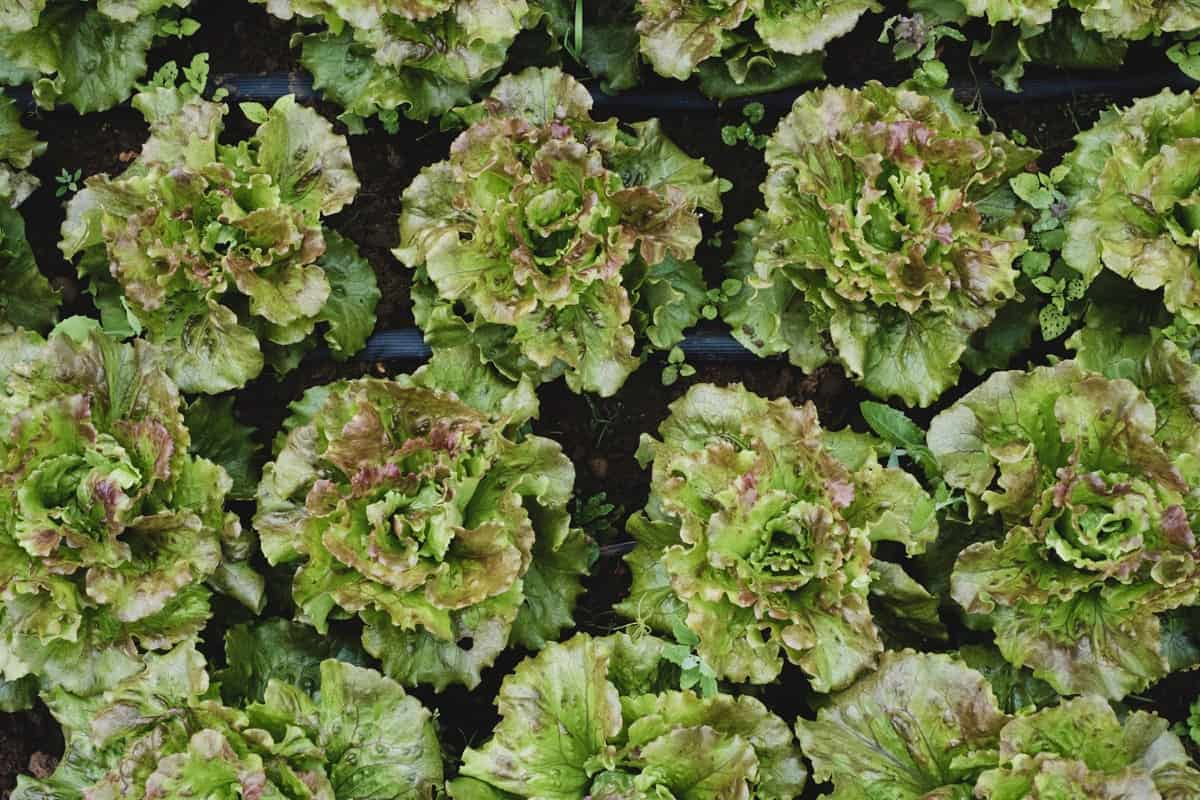
If you want to try something different, there are wide varieties of Lettuce that you can grow at home. Lettuce is a fast-growing crop that you can harvest just a few weeks after planting. When the leaves are big enough to eat, cut them off at the base of the plant. Leave around an inch of stem on the plant to continue growing. You can Harvest Lettuce leaves as often as you like, and they’ll keep growing back if you don’t take all of them at once.
Green Beans
Green Beans are the easiest vegetables to grow at home. You only need a pot or raised bed, soil, and seeds. You can start your Green Beans indoors or outdoors. If you start them indoors, transplant them when they’re about 4 inches tall. If you start them outdoors, wait until the weather is warm enough and plant them directly in the ground. Beans are relatively low-maintenance and can be grown in a variety of conditions.
Beans are typically planted in the spring after the last frost has passed. They can be grown in both containers and directly in the ground. If you’re growing them in containers, make sure to choose a pot that is at least 12 inches deep. Beans need full sunlight to thrive, so plant them in an area with plenty of sun throughout the day. They also require consistent watering, so keep an eye on the soil moisture level and water as needed.
Water your Green Beans regularly and fertilize them every few weeks. You should see flowers blooming within a few weeks and beans starting to form soon after that. Harvest your beans when they’re about 6-8 inches long. Once your beans have reached maturity (typically around 2-3 months), they’ll be ready to harvest. You can pick them individually or wait until the entire plant has matured and then cut them down all at once.
Peas
Peas are a great option if you’re looking for an easy vegetable to grow at home. Peas are relatively low maintenance and can be grown in various conditions. Peas do best in cool weather, so they’re a good choice for spring or fall planting. Peas need full sun and well-drained soil to thrive. You can direct sow Peas in the garden or start them indoors about four weeks before your last frost date.
In case you missed it: How to Grow Peas from Seed to Harvest: Check How this Guide Helps Beginners
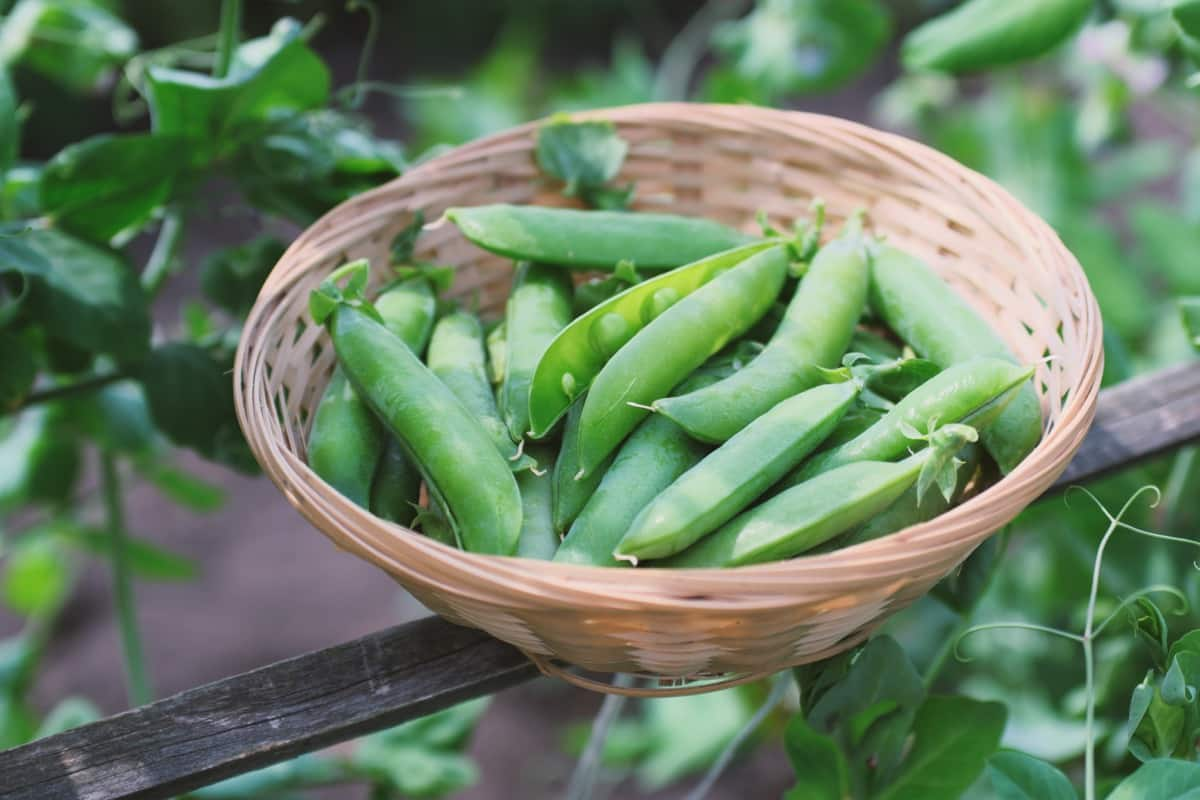
Press the seeds into the soil about an inch apart to plant Peas. Once the plants start to grow, you’ll need to support them to climb. Trellises or fences work well for this purpose. Keep the soil moist throughout the growing season and fertilize regularly with a balanced fertilizer. You should start seeing pods form within two months. When the pods are plump and green, they’re ready to harvest. To avoid over-maturity, pick Peas regularly and remove any that become yellow or brown.
Radishes
Radishes are one of the simplest vegetables to grow at home. You only need a pot or raised bed, soil, and water. Radishes can be planted in early spring or fall and will be ready to harvest in just a few weeks. Radishes are a great vegetable to grow if you are new to gardening, as they are very easy to care for. Just monitor the soil moisture levels, as Radishes prefer moist soil.
Plant Radishes in early spring or late summer. They germinate quickly, so you’ll see results in at least three weeks. Look for a sunny spot in your garden with well-drained soil. Sow the seeds thinly and cover with ½ inch of soil. Water regularly and thin the seedlings 3 inches apart when they’re big enough to handle. Radishes are ready to harvest when they’re still small, about the size of a marble. Pull them up by the leaves, careful not to damage the roots of other plants nearby.
Carrots
Carrots are versatile root vegetables that can be grown in most climates. When growing Carrots at home, choosing a variety suited to your climate and soil type is important. Early varieties of Carrots can be planted as soon as the ground can be worked in the spring. For a fall crop, plant Carrots in late summer. Carrots need full sun and well-drained soil to grow well. Add organic matter to sandy soils to improve drainage and water retention.
In case you missed it: Homemade Fertilizers for Root Vegetables: Potatoes, Carrots, Beetroot, Onions, Radishes, Turnip, Ginger, and Garlic
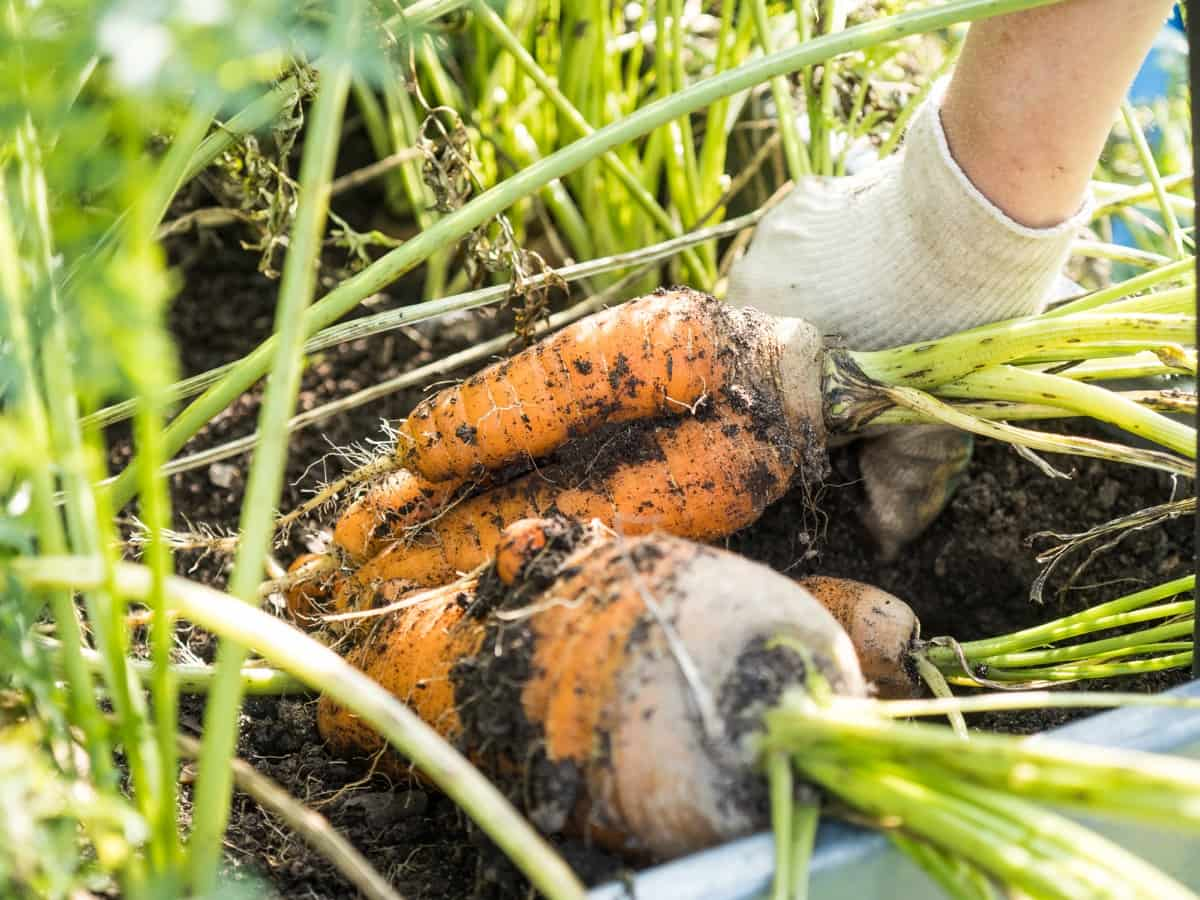
Carrots can be spaced 4-6 inches apart in rows 18-24 inches apart. Keep the area weed free so the Carrots have room to grow. Water regularly so the soil is moist but not soggy. Carrots will be ready to harvest in 80-90 days, depending on the variety. Pull them up by the greens when they are about ¾ inch in diameter for baby Carrots or 1½ inches for full-sized Carrots.
Cucumbers
With just a little care, you can enjoy a bountiful crop of Cucumbers all summer. To get started, you’ll need some basic supplies. First, choose a pot or container at least 12 inches deep with drainage holes. Next, fill your pot with high-quality potting soil. Cucumbers like roots to stay moist, so water your soil well before planting your seeds or seedlings. Once your pot is ready, it’s time to plant your Cucumber plants.
In case you missed it:

Suppose you’re starting with seeds, plant 3-4 seeds per pot. Suppose you’re using seedlings, plant 1-2 per pot. Once your plants are in the ground, give them a good drink of water and place them in a sunny spot. Cucumbers need plenty of sunlight to thrive, so they get at least 6 hours of direct sunlight daily. As your plants grow, they may need support in the form of stakes or cages. This will help keep them from getting too top-heavy and falling over.
Kale
Kale is one of the easiest vegetables to grow at home. It can tolerate cold temperatures and does not require much maintenance. To grow Kale, sow the seeds in well-drained soil in early spring or fall. Thin the seedlings to spacing about twelve inches apart when four inches tall. It prefers well-drained, moist soil and should be fertilized regularly. Kale can be harvested starting about 70-95 days after planting. To harvest, cut the leaves off at the base of the plant.
Swiss Chard
Swiss Chard is a nutrient-rich leafy green vegetable that is relatively easy to grow at home. This hardy vegetable can tolerate partial shade and various soil types. Swiss Chard is usually grown from seedlings, which can be started indoors or outdoors. When transplanting seedlings, space them evenly, so they have enough room to grow. Water regularly and fertilize as needed. Harvest the leaves when they are 6-8 inches long. Swiss Chard is a versatile vegetable that can be used in various dishes.
In case you missed it: How to Grow and Care for Swiss Chard in Containers: Planting to Harvesting Process
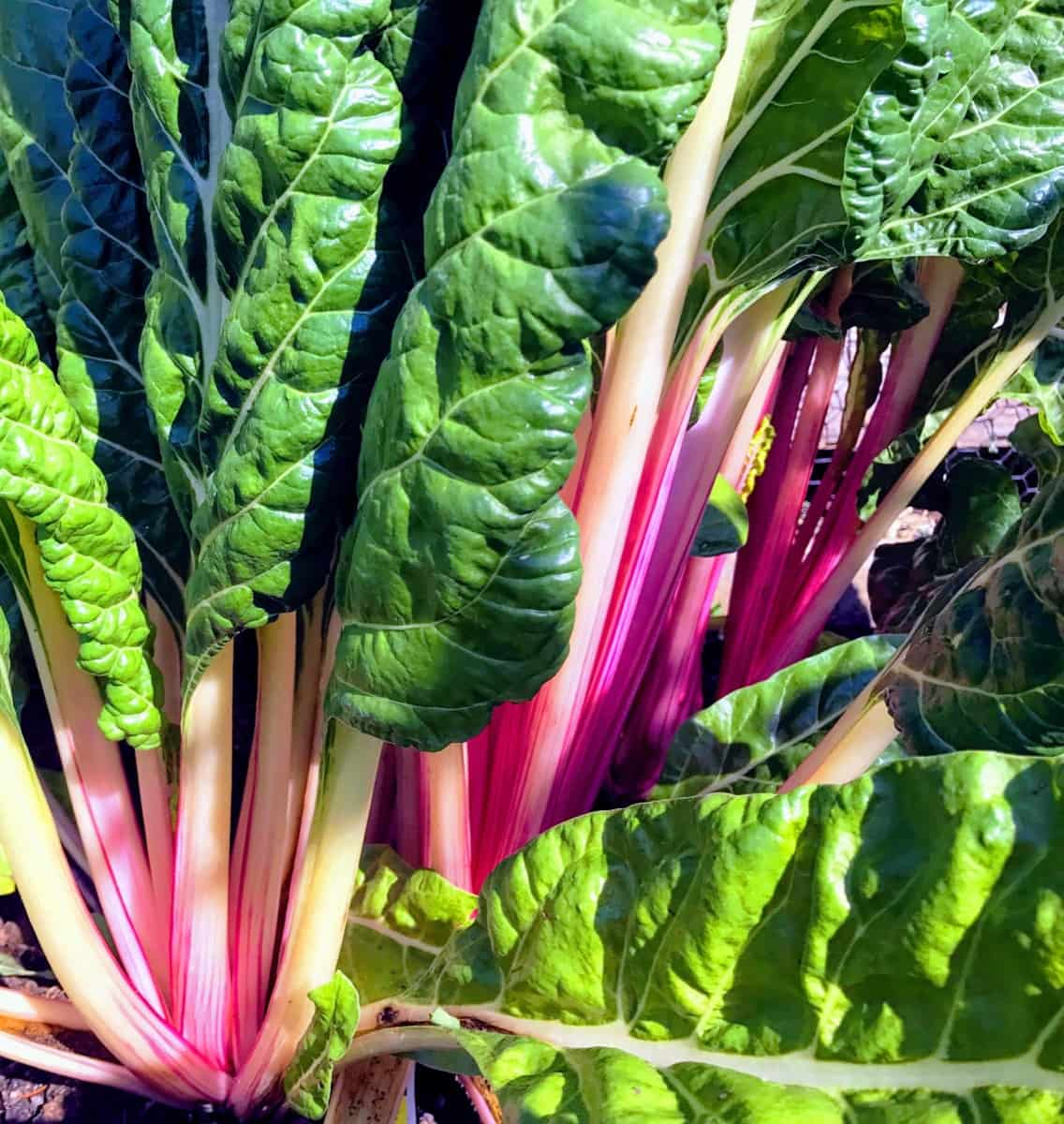
Beets
Beetroot is a great option if you’re looking for an easy vegetable to grow at home. Beetroots are relatively low maintenance and can be grown in most climates. They also don’t occupy much space, so they’re perfect for small or balcony gardens. Beetroots prefer loose, well-drained soil and full sun, but they will also do well in partial shade. To sow the seeds, dig a shallow trench in the soil and scatter the seeds thinly. If planting seeds, sow them about ½ inch deep and 2 inches apart.
Thin the seedlings to 3 to 4 inches apart when they are about 4 inches tall. Transplanting beet seedlings is also easy. Just dig a hole twice the size of the root ball and plant the seedling at the same depth it was growing in the container. Water well after transplanting. Beetroots will be ready to harvest in around 50 to 70 days after planting. When harvesting, be careful not to damage the roots, which can affect their flavor. Cut the leaves off at ground level, leaving a short stem attached to the root. Store them in a cool, dry place until ready to use them.
Squash
One of the best vegetables to grow at home is Squash. Squash is a versatile vegetable that can be used in many different dishes and is relatively easy to grow. There are several types of Squash, but the most common varieties are Summer Squash and Winter Squash. Summer Squashes are relatively easy to grow and don’t require much care or attention. All you need to do is plant the seeds, water them regularly, and harvest the fruits when they’re ripe. Summer Squash, or zucchini, is one of the easiest vegetables to grow home.
In case you missed it: Squash Plant Diseases, Pests and Control Methods
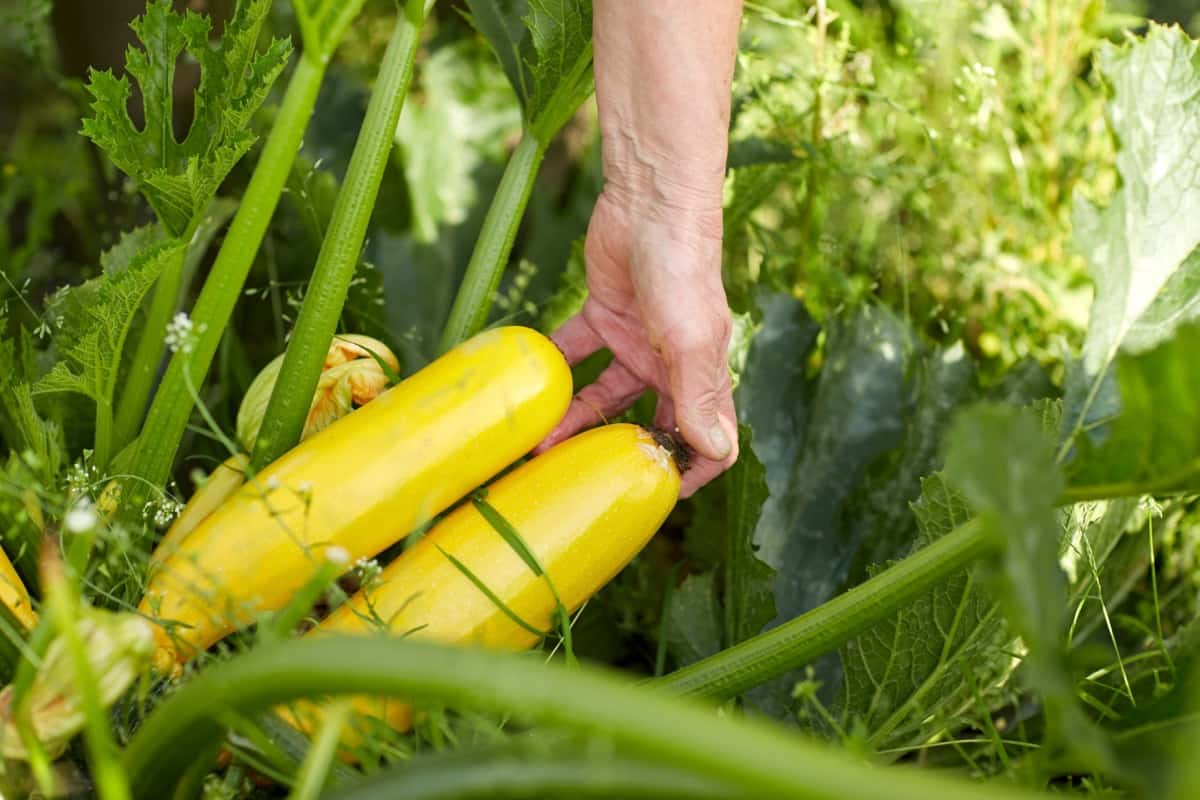
All you need is a sunny spot in your yard and some basic gardening supplies. To plant Summer Squash, start by preparing your planting area. Loosen the soil and create a small mound in the center of the planting area. Next, sow your seeds on the mound. Space them about 6 inches apart so that they have room to grow. Once the seeds have been sown, lightly cover them with soil and water. Keep the soil moist but not saturated throughout the growing season.
When the plants are about 6 inches tall, you can begin to thin them out, so they are spaced about 12 inches apart. Harvest Summer Squash when the fruits are about 6-8 inches long and still tender. Cut them from the plant with a sharp knife, careful not to damage the stem. Winter Squashes are typically harvested in the fall or winter, hence their name. Winter Squashes are more challenging to grow than Summer Squashes, but they’re still relatively easy compared to other vegetables.
Conclusion
If you want to get into gardening but don’t know where to start, growing vegetables is a great way to go. Not only are vegetables relatively easy to grow, but you can also get a lot of enjoyment out of the process. Growing your vegetables can be a fun and rewarding experience, but it can also be daunting if you’re unsure where to start. Luckily, some vegetables are easy to grow at home, even for beginners.
One of the great things about growing your vegetables is that you can choose varieties that suit your taste. You should consider a few factors when it comes to ease of growth. One is whether the vegetable is annual or perennial. Annuals must be replanted yearly, while perennials will return on their own.
Another factor is whether the plant is self-fertile or not. Self-fertile plants don’t need another plant of the same variety to produce fruit or vegetables, while non-self-fertile plants do. Finally, some plants are more tolerant of cold or heat than others, so choosing varieties that will do well in your climate is important. Growing your vegetables is also a great way to ensure you get the freshest and most nutritious produce possible.
- Gardening Techniques in Planting Vegetables
- Where to Place Indoor Plants in Your Home
- How to Grow Tomatoes Organically at Home: A Comprehensive Guide
- Organic Gardening on a Budget: Low-Cost Methods and Materials
- Gongura Seed Germination and Planting Methods
- Cabbage Seed Germination and Selection
- Broccoli Seed Germination and Selection
- Asparagus Seed Germination and Variety Selection
- Seasonal Flower Gardening: Best Practices for Spring, Summer, Fall, and Winter
- How to Grow Hibiscus from Flower
- Plantation Ideas for Home Decoration: A Beginners Guide
- Flower Garden Designs and Layouts for Beginners
- Planting and Spacing Techniques in Papaya: A Beginner’s Guide
- Growing Gold: Essential Techniques for Planting Pineapples
- How to Make Kalanchoe Plant Bushy: Home Remedies and Solutions
- 11 Reasons Why Your Gardenia is Not Blooming: Home Remedies and Solutions
- Eco Elegance: The Guide to Designing a Drought-Tolerant Landscape
- Gardening on a Slope: Strategies for Hillside Landscaping
- Nourish and Flourish: Top Organic Mulches for Thriving House Plants
- Everything You Want to Know about Indian Mogra Flower: Discover Uses and Growing
- Green Thumb Success: Expert Tips for Cultivating Greenhouse Pumpkins All Year Round
- Maximize Growth & Flavor: The Ultimate Guide to Companion Planting in Herb Gardens
- How to Control Rhododendron Problems Naturally: Home Remedies and Organic Ways to Fix Them
- Natural Magic: The Remarkable Benefits of Cinnamon for Plants
- Best Steps to Revive Dying Tulip with Natural and Organic Treatment
- 10 Reasons Why Your Angel Trumpet is Not Blooming: Remedies and Treatment
- How to Fix Periwinkle Leaf and Flower-Related Problems: Natural Remedies and Solutions
- How to Fix Zinnias Leaf and Flower Problems: Discover Natural and Home Remedies
- Organic Steps to Induce Lemon Tree Flowers: A Comprehensive Guide
- Bloom Booster: Crafting the Perfect Homemade Bougainvillea Fertilizer
- Optimizing Growth: A Guide to Applying NPK Fertilizer for Potted Plants
- 10 Best Homemade Fertilizers for Rubber Plant: DIY Recipes and Application Method
- How to Boost Female Pumpkin Flowers: Effective Steps for More Flowers and High Yields
- Transform Your Indoor Garden: Top Benefits of Pink Salt for Houseplants
- 10 Best Homemade Fertilizers for Peacock Plants (Calathea): Easy DIY Guide
- Unlock Blooms: 9 Reasons Why Your Potted Chrysanthemum is Not Blooming